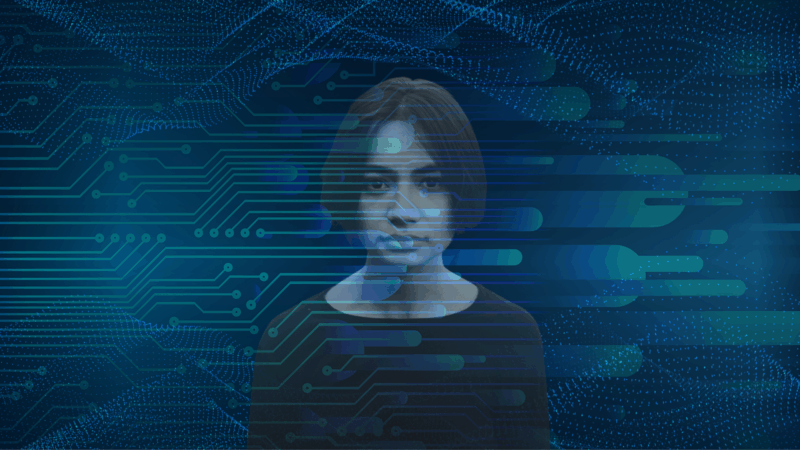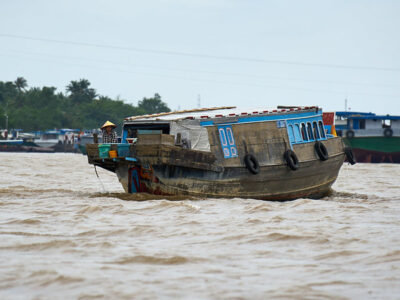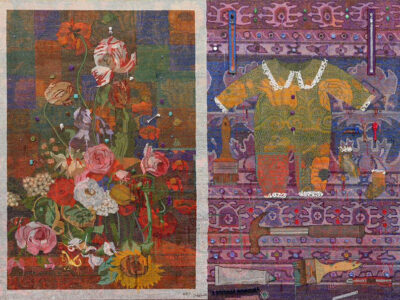
Image made via CanvaPro.
This article is part of the “Information abundance in Southeast Asia” project by Australian National University. Irma Garnesia is a research assistant working on the Indonesian part.
In Indonesia, female journalists and activists face relentless digital attacks. Many women report harassment from political “buzzers” (paid online propagandists) and “wibu” (obsessive anime fans), to K-pop fandoms and people with opposing political views. Journalists, editors, activists, lawyers, and digital rights advocates explain how this violence has unfolded over the last five years and why the violence remains a widespread problem.
Bunga (a pseudonym) never expected that her presentation at a Japanese cultural festival would make her a target. Her talk explored how Japanese comics often depict women in demeaning ways and how these portrayals reflect Japan’s patriarchal norms. But then, her presentation went viral on social media, and anime fans flooded her social media, accusing her of being a “hardcore feminist” who misunderstood Japanese culture.
Soon, her personal information spread online. Her identity as a women’s magazine journalist was doxed, her photos were circulated and edited on Discord groups. “The attacks didn’t just criticize my work,” she recalled. “They came after me as a person.”
The harassment left her traumatized and fearful of being recognized in public. “What if they stab me on public transportation?” she half-joked, though the anxiety behind her words was real.
Bunga’s experience is far from isolated. Kania, a freelance journalist and activist, frequently faces online harassment from political buzzers of former Indonesian President Joko Widodo. Pipit was attacked by people online after criticizing Indonesia’s national health insurance agency. Meanwhile, Nala, a fact-checker, was targeted by anti-vaccine groups within Indonesia.
These cases reveal a pattern of gendered digital violence where professional criticism was blurred by personal attacks rooted in misogyny.
The hidden scale of abuse
Much of this violence remains invisible. A 2021 survey by the think tank PR2Media, which involved 1,256 female journalists, found that 85.7 percent had experienced some form of violence, and 70.1 percent said it occurred both online and offline.
The Southeast Asia Freedom of Expression Network (SAFEnet) has documented the types of digital violence that predominantly target female journalists and activists. It can include doxing, gender or sexuality outing, online surveillance, photo manipulation, account hacking, DDoS attacks, where users intentionally overwhelm a server to bring down a site, and persistent online harassment.
These victims describe not only the attacks, but also how their colleagues or editors often blamed them for being “too reactive” or “too emotional” on social media. As they said, institutional protection was minimal.
“They simply told me to stay off social media for a while,” said Bunga. Yet her harassment had already spread across every platform she used.
Institutions on the defensive
However, it is not that institutions do not want to protect their workers. Even media organizations that champion gender equality are not immune. Magdalene, an online publication focused on women’s rights and diversity in Indonesia, faces daily online backlash and, in May 2020, suffered a massive DDoS attack that took down its website.
According to Managing Editor Purnama Ayu Rizky, the newsroom is still developing safety protocols for field reporting, though they already have protocols for digital safety. “We coordinate with groups like the Alliance of Independent Journalists (AJI) and the Press Legal Aid Institute (LBH Pers) if we face backlash related to our reports.”
Human rights groups like KONTRAS, which handle cases of impunity and state violence, face similar intimidation, from digital surveillance to anonymous harassment. Vebrina Monicha, who works in the Legal Division of KONTRAS, explained that exposure to such pressure has led some staff to normalize it.
Many institutions in Indonesia prioritized reactive responses over long-term protective measures, even after five years of sustained digital attacks. More than that, digital violence is becoming normalized, and digital security among journalists and activists often depends on outside organizations like AJI, LBH Pers, or SAFEnet.
Fragmented legal frameworks
According to Siti Aminah Tardi, Executive Director of the Indonesia Legal Resource Center and former commissioner at the National Commission on Violence Against Women (Komnas Perempuan), violence against women increasingly blends online and offline elements. “The [COVID-19] pandemic shifted how abuse operates,” she explained. “Perpetrators and victims may never meet in person, yet the harm is deeply real.”
Komnas Perempuan’s 2024 CATAHU report recorded 330,097 cases of gender-based violence against women, up 14 percent from the previous year. However, this data is likely lower than the actual representation. “This is the tip of the iceberg,” said Bahrul Fuad, the current commissioner of Komnas Perempuan.
Indonesia has introduced several laws addressing digital and gender-based violence, yet the enforcement remains weak. The country passed The Sexual Violence Crime Act (TPKS Law) in 2022. The law formally recognizes Electronic-Based Sexual Violence (KBSE), including non-consensual sharing of sexual content and digital stalking. The law also guarantees victims’ rights to erase online traces, though implementation has stalled.
Meanwhile, the Personal Data Protection Law (PDP), intended to safeguard privacy, still fails to treat women’s bodies and images as personal data. Siti Tardi mentioned that when the PDP was being drafted, digital violence, such as deepfakes, artificial photos or videos where a person’s likeness is superimposed upon fake content, was not widely known. Although Komnas itself continued to advocate for women’s bodies to be considered personal data, this was not accommodated.
The older Electronic Information and Transactions Law (ITE) remains problematic, as it focuses on information transmission rather than victim protection and the violence itself. “Law enforcement often refuses to use the TPKS Law,” Siti explained, “arguing, what if the distribution was consensual. But how can we know that once the image is already out there?”
Siti also noted that a long-promised government mechanism for removing harmful content still does not exist. “The key feature of online violence is speed,” she said. “Without rapid response, victims are left exposed.”
Platforms that remain unaccountable
Because digital violence unfolds online, tech platforms play a central role, yet their accountability remains elusive. According to SAFEnet’s executive director, Nenden S. Arum, global tech companies often “wash their hands” of responsibility, outsourcing safety work to civil society groups. “Reporting mechanisms are slow and ineffective,” she said. This is dangerous, as the content is still spreading while the moderation could take time.
Platform moderation also reflects global politics. After Donald Trump’s latest accession to office, companies like Meta and Twitter (now X) loosened moderation rules in the name of “free speech.” Nenden argued this shift has emboldened online harassment worldwide.
For Southeast Asia, the problem is even deeper. The platform may have a lack of cultural understanding of the region. Many moderation teams fail to grasp how Southeast Asian women experience shame, modesty, and exposure differently. “Look, I wear a headscarf,” said Siti Tardi. “When someone edited my picture of not wearing a hijab, it felt like being stripped naked.”
Yuri Muktia from the Civil Society Coalition Against Sexual Violence (KOMPAKS) described months of unsuccessful attempts to remove doxing content from Instagram. “Meta said there wasn’t enough evidence,” she recalled. “Even after multiple reports, the posts stayed up.”
KOMPAKS and SAFEnet continue meeting with platform representatives, urging them to adopt faster, culturally aware moderation systems, yet progress remains slow. “Platform rules often mirror how seriously national regulators treat these issues,” said Yuri. “If our government doesn’t prioritize digital safety, neither will they.”
The global paradox of safety
Digital violence against women journalists and activists is not unique to Indonesia, but the country’s experience exposes a broader global paradox. While laws, watchdogs, and advocacy networks have multiplied, the architecture of online spaces still reproduces misogyny and impunity.
Despite new frameworks like the TPKS and PDP Laws, implementation lags behind. Media outlets and NGOs, lacking resources or digital literacy, rely on external support, while platforms, the very spaces where violence occurs, remain largely unaccountable.
There is not yet a regulation in Indonesia that fully and explicitly holds tech platforms responsible for digital violence (such as harassment, doxing, gender-based online abuse) in a way that mirrors their responsibility for content moderation. The ITE Law is often used to punish individuals for content rather than to require platforms to proactively prevent or remove harmful content. For example, a study mentioned “the absence of national legal norms that explicitly regulate the responsibility of platforms also weakens legal protection for victims.”
As Siti Tardi put it, “Without rapid response, victims are left exposed.” Indonesia’s struggle mirrors those of many countries across the Global South, where patriarchal norms, weak institutions, and unresponsive tech companies intersect.
After five years of advocacy, reports, and investigations, survivors like Bunga are done waiting for justice and for safety online. In Indonesia’s digital space, silence and inaction continue to speak the loudest.







